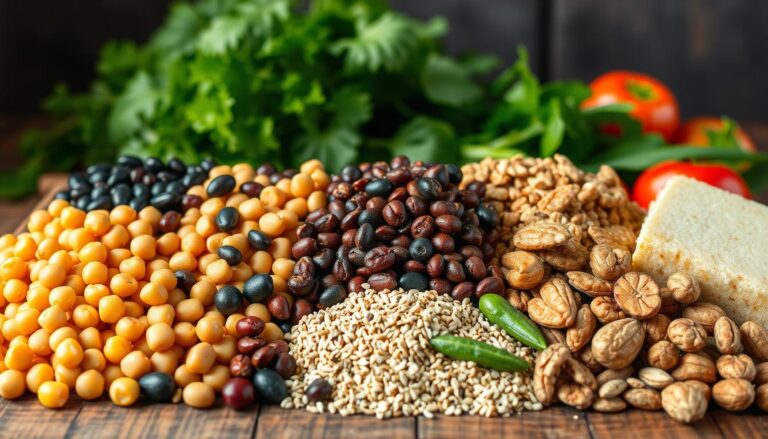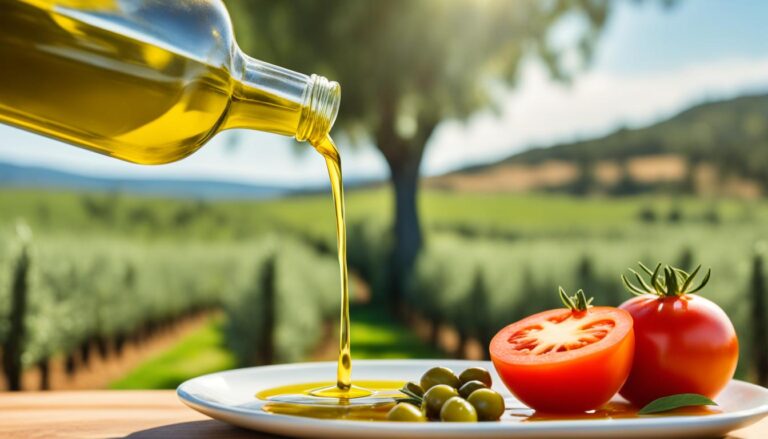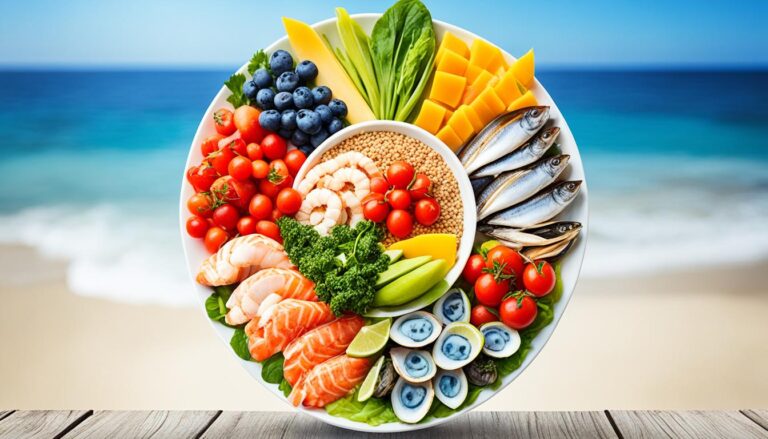Ever thought about which spices are the most antioxidant rich? Herbs and spices have been valued for their taste and health benefits for ages.
Yet, their antioxidant power is often overlooked. Let’s explore the world of antioxidant spices and how they can boost your health.
Key Takeaways
- Herbs and spices are a rich source of various phytochemicals with powerful antioxidant properties.
- Antioxidants and reactive oxygen species ROS play complex roles in normal physiology and disease prevention.
- Supplementation with individual antioxidants has often yielded limited or even adverse effects, highlighting the importance of a whole-food approach.
- Certain spices, such as clove, peppermint, allspice, and cinnamon, stand out for their exceptional antioxidant content.
- Herbs like oregano, thyme, sage, and rosemary also boast impressive antioxidant profiles.
Introduction to Antioxidants in Herbs and Spices
Herbs and spices are parts of plants used for flavor and color. They are not just for taste they are also packed with antioxidant compounds. These compounds help protect our bodies from harm.
Definition of Herbs and Spices
Herbs and spices add flavor and color to our food. They are different from vegetables, which we eat for their nutrients. Herbs and spices are used in small amounts for taste.
Antioxidant Properties of Herbs and Spices
Herbs and spices have many antioxidant compounds. These include phenolic acids, flavonoids, and terpenes. They help fight free radicals and protect our cells.
Complexity of Antioxidants and Reactive Oxygen Species
Antioxidants and ROS are complex. A single antioxidant can’t protect all cells without affecting ROS’s role. ROS is important for cell signaling and other functions.
Spices protect lipids in food from oxidative deterioration and delay the formation of oxidant substances.
Herbs and spices have many antioxidants. Their complex interactions with ROS show why they’re good for us. Adding them to our diet can help keep us healthy.

Role of Reactive Oxygen Species in Normal Physiology
Reactive oxygen species ROS are oxygen-rich molecules that react quickly. They can be free-radical or nonradical ROS. ROS are key in cell signaling, starting, mediating, and ending processes. They are made when oxygen is reduced to water and also by external and internal triggers.
Cell Signaling Functions of ROS
ROS affect cell signaling and metabolism. They change protein production, stability, or function. The balance between ROS and antioxidants in a cell is vital for its functions.
Production of Reactive Oxygen Species
ROS are always being made in cells as part of life. High ROS levels can lead to cell damage and diseases like arthritis and cancer. This includes heart and brain diseases, inflammation, and more.
Perception of Reactive Oxygen Species
Cells sense ROS changes through different ways. This includes changes in genes, protein breakdown, and enzyme activity. This sensing helps cells adjust to oxidative stress, keeping them healthy.
Knowing how ROS work in healthy cells is key. It helps us find ways to handle oxidative stress and its health effects.

Which Spice is Rich in Antioxidants?
Two spices stand out for their high antioxidant content: clove and peppermint. Research shows they are packed with beneficial antioxidants.
Clove The Highest Antioxidant Content
Clove is a fragrant spice with an astounding amount of antioxidants. It has an ORAC score of 314,446. This is 22 times higher than wild blueberries. It’s one of the top antioxidant-rich spices globally.
Peppermint Dried Leaves Have More Antioxidants
Peppermint is known for its refreshing scent and taste. Its dried leaves have substantially more antioxidants than fresh leaves. This makes them a great addition to your spice collection.
Spices like clove and peppermint are true antioxidant powerhouses, providing a natural and flavorful way to boost your intake of these essential nutrients.
Adding these spices to your cooking can bring health benefits and flavor to your dishes.
Other Antioxidant Rich Spices
Clove, peppermint, and other spices are not alone in their antioxidant power. Spices like allspice and cinnamon also shine. They bring unique flavors and health benefits to the table.
Allspice A Warm Versatile Spice
Ground allspice is a warm, aromatic spice from the Caribbean. It tastes like cinnamon, clove, and pepper mixed together. It’s also packed with antioxidants.
Studies suggest it may reduce inflammation and fight bacterial infections. Adding allspice to your dishes can enhance flavor and offer antioxidant benefits.
Cinnamon A Sweet and Familiar Favorite
Cinnamon is loved for its sweet and comforting smell. But it’s more than just a flavor enhancer. Cinnamon is full of antioxidants.
The Ceylon variety has more antioxidants than the Cassia type. Its antioxidants may help improve blood sugar control, lower bad cholesterol levels, and fight harmful bacteria and fungi. Try cinnamon on your oatmeal, yogurt, or toast for a sweet treat and health boost.

Cinnamon has more antioxidants in the Ceylon variety compared to Cassia, and it can help improve blood sugar control, lower bad cholesterol levels, and fight bacteria and fungus.
Herbs with Potent Antioxidant Properties
Many herbs and spices are packed with antioxidants. But two stand out: oregano and thyme. Dried versions of these herbs often have more antioxidants than fresh ones.
Oregano Dried Leaves Outperform Fresh
Oregano is a key herb in Italian and Mediterranean cooking. It’s often mixed with basil for a classic taste. Dried oregano leaves have more antioxidants than fresh oregano. This is because drying concentrates the good stuff.
Thyme A Floral and Fragrant Herb
Dried thyme also has high antioxidant levels beating fresh thyme. It has a unique floral scent and taste. Thyme goes well with many foods, from meats to veggies. Its antioxidants make it a great spice to have.
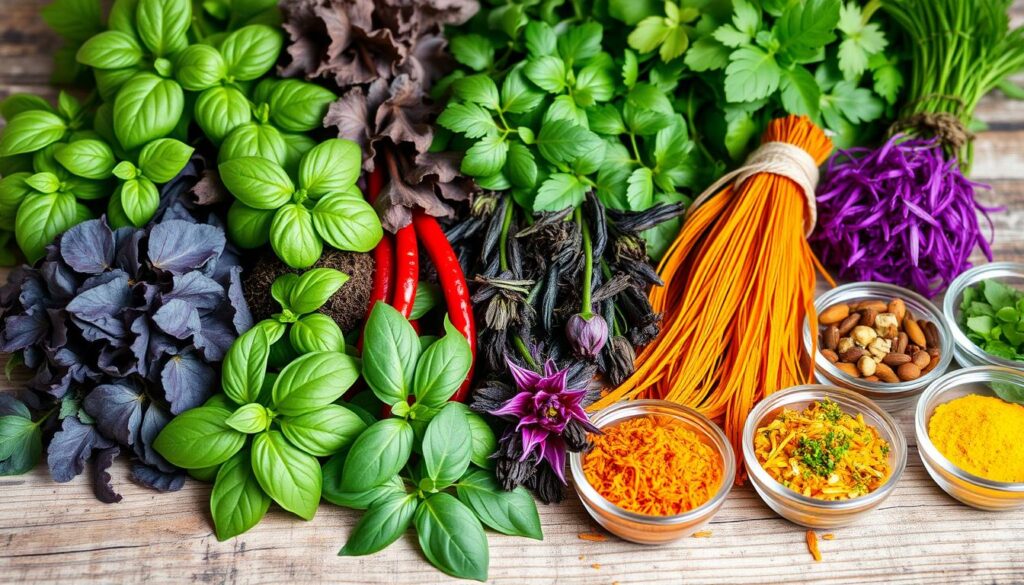
Adding oregano and thyme to your meals is a smart move. They boost your food’s nutrition and taste. You can use dried or fresh herbs to make your diet healthier and more flavorful.
More Antioxidant Powerhouses in the Spice Rack
Some of the most well-known antioxidant-rich spices like cinnamon, cloves, and peppermint have been discussed. But, there are other hidden gems in the spice rack that deserve attention. Sage and rosemary are two other antioxidant spices that fight free radicals and support health.
Sage A Strong and Earthy Flavor
Sage is a fragrant herb with a strong and earthy flavor. Dried sage has a high antioxidant content, making it great for a sage antioxidants-focused diet. It’s perfect for seasoning poultry, grains, or roasted vegetables, adding a robust, savory taste to many dishes.
Rosemary A Piny and Lemony Delight
Rosemary is another spice that stands out for its rosemary antioxidants. It has a piny and lemony flavor that goes well with sage and many other foods. Like sage, rosemary is full of antioxidants that fight oxidative stress and support health.
If you’re looking to add more other antioxidant spices to your cooking or want to try new flavors, sage and rosemary are great choices. They offer both taste and health benefits.
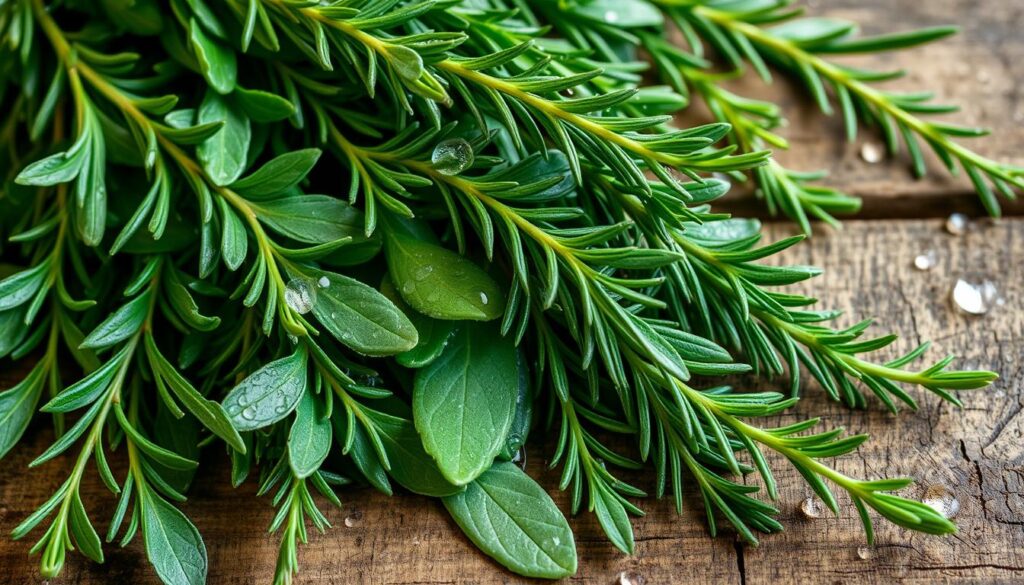
The Curious Case of Turmeric
Turmeric, the bright yellow spice, is known for its strong antioxidant power. This is thanks to curcumin, a unique compound. But, research on turmeric’s health benefits is mixed. Turmeric has less antioxidants than rosemary, ranking 8th in antioxidant-rich spices.
Despite this, turmeric is still a fascinating spice to study. It can protect the skin from damage. Its active part, curcumin, might stop melanoma cells from growing. Curcumin applied on the skin also speeds up wound healing.
Turmeric has over 200 curcuminoids, with curcumin being the most important antioxidant. It works as well as NSAIDs for inflammation and pain. Curcumin also boosts brain health by increasing BDNF levels.
While research on turmeric’s benefits is ongoing, it’s clear it offers a lot. Its antioxidants and anti-inflammatory effects are impressive. But, it’s key to see turmeric as part of a balanced diet, not a single solution.
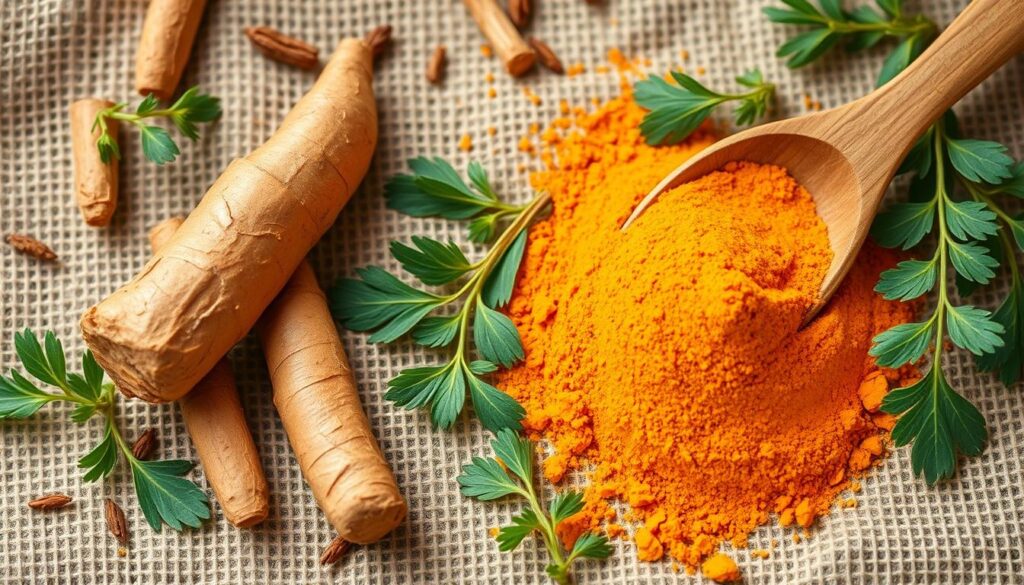
Turmeric is recognized as a superfood due to its anti-inflammatory properties attributed to its active compound, curcumin.
Incorporating Antioxidant Rich Spices into Your Diet
Adding spices rich in antioxidants to your meals is a great way to improve your health. Try mixing different spices in your food to make it more exciting. You can add antioxidant-rich spices to any meal, from breakfast to dessert.
Start by adding ground clove to your oatmeal or yogurt. A small amount of clove has more antioxidants than blueberries. Oregano is also packed with antioxidants, making it a great choice for your meals.
Using ginger, cinnamon, and turmeric in your cooking can also be beneficial. Ginger helps protect your body from damage. Cinnamon and turmeric may lower the risk of serious diseases like cancer and heart disease.
| Spice | Antioxidant Benefits |
|---|---|
| Clove | High in antioxidants, with just 1/2 teaspoon containing more than 1/2 cup of blueberries |
| Oregano | Highest total antioxidant capacity and phenolic content compared to other herbs |
| Ginger | Gingerol may help protect against oxidative damage and prevent cancer development |
| Cinnamon | Antioxidant components may help avert chronic diseases like cancer and heart disease |
| Turmeric | Curcumin has potential to prevent chronic diseases like cancer, heart disease, and Alzheimer’s |
Adding a variety of antioxidant-rich spices to your meals is easy and tasty. Try different spices and cooking methods to find what you like best. This way, you can enjoy delicious food that’s also good for you.
Potential Health Benefits of Antioxidants from Spices
Antioxidants in herbs and spices help our body fight off harmful molecules. They play a key role in our defense system and in sending signals to our cells. This could help manage health issues like cancers and heart disease.
Free radicals are unstable molecules that can cause inflammation and health problems. They are made inside our body and by external factors like pollution. Antioxidants from plants can neutralize these free radicals, which might lower the risk of diseases.
Antioxidants like Vitamin A, C, and E, beta-carotene, lycopene, and selenium have many health benefits. Foods like brightly colored fruits and veggies are full of these. Cooking can make some antioxidants more available to our bodies.
Eating herbs and spices is good for us, but too much of antioxidant supplements can be bad. The National Institutes of Health NIH warns against too much of supplements like beta-carotene and vitamin E. They say eating fresh plant-based foods is better for our health.
Natural antioxidants are better for us than artificial ones. For example, a small amount of clove has more antioxidants than blueberries. A teaspoon of dried oregano has as many antioxidants as a whole cup of sweet potatoes.
Spices like ginger, cinnamon, turmeric, sage, rosemary, and peppermint are also good for us. They can reduce inflammation, improve brain function, and help with blood sugar. They can also help with other health issues.
More research is needed to know all the health benefits of antioxidant rich spices. But, the evidence so far shows they can help our overall health and well-being.
Conclusion
Herbs and spices are packed with antioxidants that can boost our health. Some spices, like clove and peppermint, have especially high levels. Using a variety of spices can help us get the most benefits.
Studies are showing how these spices can help our health. They can lower bad fats and improve how our body handles sugar. India, being a big player in spice production, is key in making these health benefits available worldwide.
Adding antioxidant-rich spices to our meals can improve our health. As we learn more about spices, their potential to help us stay healthy grows. It’s a simple way to take care of our bodies.
